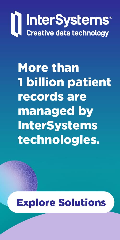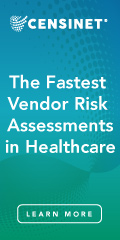Readers Write: Top Technologies in Private Practice for 2015 and Beyond
Top Technologies in Private Practice for 2015 and Beyond
By Arman Samani

As we enter into 2015, healthcare is entering an era where it must compete for the patient’s time and attention. Mobile and cloud computing are now pervasive enablers of other technologies that physicians can and should be leveraging. Mobile and cloud are attributes of other technologies rather than a technology or trend themselves.
As payment reform is progressing and we are switching from fee-for-service to fee for value models, it is critical that private practices take steps in 2015 to prepare for this new reimbursement model. This preparation will steer practices toward doing the right things for their patients as well their businesses. Practice management, EHR, patient relationship management, actionable analytics, and interoperability are broad categories that a private practice should evaluate carefully to be prepared for long-term growth.
Health watcher technologies are enablers of proactive patient engagement. According to the recent IDTechEx report on the wearables market for healthcare, the market is projected to grow from $14 billion in 2014 to more than $70 billion in 2024. This booming market is an opportunity for physicians to shift into the role of “health watcher” for their patients. The industry can no longer function in reactive ways to patients initiating visits. Both Apple and Samsung have introduced health tracking frameworks and data repositories in their mobile devices, and as a result, consumers will soon be wearing devices such as Apple Watch and Samsung wearables.
Not only can someone track how many steps or even floors they have walked, but health statistics like heart rate and blood pressure can be measured. Private practices should think about integrating this patient base data into their EHR in order to provide proactive and preventative actions to their patient population. Not only is this the right thing to do for the patients, it increases the practice revenue, enhances reputation, and decreases healthcare costs. While appointment reminder technology is now mainstream, health reminder communications such as email, text, and phone calls will be become mainstream in 2015 and beyond.
With the rise of mobile computing, convenience will be an important factor. A 2014 study from Manhattan Research found two in five physicians agreed that using digital technology to communicate with patients will improve patient outcomes. Starting January 2015, CMS will start paying for chronic care management, wellness visits, and psychotherapy services. The telemedicine cash business has been growing for a few years and now that CMS has expanded reimbursement for telemedicine, private practices need to start putting business processes and technologies together to take advantage of this growing market and offering a convenient way for their patients to save time and get readily accessible preventative care.
With industry regulations such as ICD-10 imminent, practice management software has to be ready to support the increased complexity in coding. However, the effects of an expanded code base aren’t all about technology. Patient visits and the associated workflows, from the moment a patient arrives through to receiving a claim payment, need to change in fundamental ways. The questions that are asked and data that is collected right at the point of care are also affected. Practices need to stop thinking of coding as data entry and make it a proactive process that happens in real time. Practices that don’t plan for this shift may see a rise in claim denials — the aftermath that creates may overwhelm staff and burden the business. Practices should do ICD-10 risk assessment now.
With cloud technologies, big data is no longer only for large health systems. From patient health monitoring to quality measures, accounts receivable and payer reimbursement, and more should be provided in easy and actionable analytics. In addition to actionable analytics for the different aspects of business, it is important to benchmark a practice against other practices or the industry as whole. Otherwise, a practice might never know how well it is doing and what new goals should be set. Benchmarking tells the practice manager where their business stands compared to other practices. It helps answer questions such as how much the practice is getting paid relative to other practices and if it needs to start collecting more for certain services. Analytics can measure these factors relative to the practice’s goals and in comparison to other practices. Benchmarking is complex and time consuming, but cloud providers of EHR and practice management technologies are especially well positioned to provide these benchmarking services.
Practices are overwhelmed with data and technology providers need to move beyond providing dashboards and monitoring trends. Big data must now be a driving force for actionable alerts that trigger automated staff or even patient actions. Physicians might be asking what treatment plan or medications other doctors are prescribing for the same diagnosis. Analytics data can help with matching up patients who share the same condition so they can compare notes and even create support groups.
All practices play a role in the healthcare ecosystem. Most practices receive patient referrals from or give patient referrals to other practices or care settings. It is important to have seamless transition of care among entities to save time and money and provide patients with excellent and convenient service. Interoperability will enable sending and receiving summary of care documents and other necessary information about the patient care continuum. Interoperable systems will be able to store patient information such as discrete data points within the EHR automatically. This will allow practices to not have to ask the same questions from patient multiple times and will expedite care, increase care quality, and decrease costs by avoiding unnecessary procedures and tests.
The pace of innovation in healthcare has immense potential to advance the quality of care in 2015 and beyond. Smart practices need to prepare and adopt for upcoming healthcare reforms and provide proactive preventative care for their patients. This is not only good business but also the right thing to do for the patients and communities.
Arman Samani is CTO of ADP AdvancedMD of South Jordan, UT.



















































































Cant you sue the F&B company for fraud if they said they paid you money but never did?